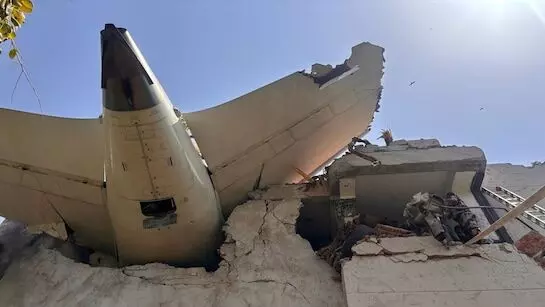DGCA Orders Urgent Inspections After Deadly Air India Crash in Ahmedabad

The tragic Air India crash in Ahmedabad on June 12 that claimed 260 lives, India's aviation regulator, the Directorate General of Civil Aviation (DGCA), has ordered mandatory inspections of engine fuel switches on certain aircraft.
The decision comes after the Aircraft Accident Investigation Bureau (AAIB) released its preliminary report into the crash involving an Air India Boeing 787-8 Dreamliner. According to the report, both engines shut down just seconds after takeoff due to the unexpected movement of fuel control switches—from "RUN" to "CUTOFF"—causing a total loss of thrust. The plane crashed into the BJ Medical College hostel building, killing all 241 passengers and crew onboard, along with 19 people on the ground.
In response, the DGCA has directed all Indian airline operators to inspect engine fuel switches on affected aircraft—mainly Boeing 737 and 787 Dreamliner models—by July 21, 2025. The inspection order is based on concerns first flagged in a 2018 FAA bulletin warning about a potential disengagement of the locking mechanism that secures these switches in place.
The DGCA has also issued mandatory modifications to certain aircraft, engines, and components based on airworthiness directives from the original manufacturers or design states.
According to sources cited by PTI, Air India had previously replaced the throttle control module (TCM)—which houses the fuel cutoff switches—twice, once in 2019 and again in 2023, following Boeing’s maintenance guidelines. These replacements were routine and not linked to any known defects in the switches.
Still, the AAIB report points to possible design flaws or maintenance oversights in the fuel control system, raising broader safety concerns. While Boeing and the FAA maintain that the system is safe, the AAIB noted that Air India had not carried out an inspection recommended in a 2018 FAA advisory, as the advisory was non-mandatory.
The AAIB’s report also mentions that while the aircraft’s aft flight recorder was too badly damaged to retrieve data using normal methods, investigators have completed drone surveys of the crash site. The wreckage has been moved to a secure location near the airport, and both engines have been recovered for detailed analysis.
Further investigation is underway, with attention now focused on how and why the fuel switches moved so suddenly—and whether this was a mechanical failure, software issue, or something else.
